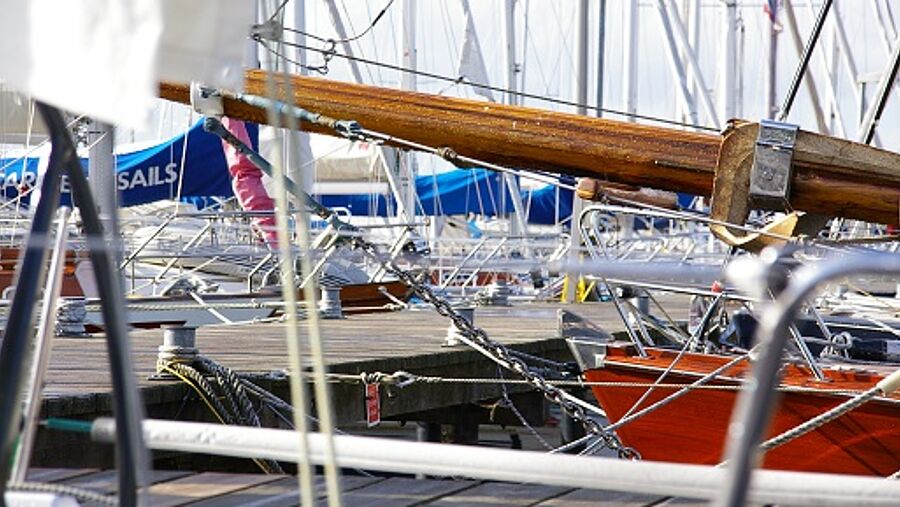
Hectic manoeuvres, onlookers at the jetty and a narrow berth - even experienced sailors can feel hot under the collar in such a situation. Once safely in a berth, a sense of relief follows, however it is also important to be careful when tie-ing up. Michael de Boer from Pantaenius recalls some important practical tips.

Many roads lead to Rome and at least as many routes lead to the berth. Sometimes the mooring goes smoothly, whereas sometimes it is somewhat challenging. An undamaged and safely berthed yacht is what counts at the end of the day.
"At Pantaenius we handle around 6000 claims every year. Damage that occurs from a collision during a port manoeuvre is unfortunately not uncommon," says Michael de Boer, who works in the claims department at yacht insurance specialist Pantaenius. "Often the situation is simply misjudged. Instead of entering the berth from the required distance, you suddenly hit the stern or bow of one of the neighbouring boats and cause a liability loss."
Undoubtedly this could have been the result of a lapse of attention. However, there are also other factors that often play a role in collision damage and are often underestimated in port. "Strong side winds, plus tidal currents you do not see can force the yacht one way and make mooring much more difficult. An example is in the various marinas of the German ‘Schlei’ area, where, even without tides, there are unexpected currents. In spite of low winds, the currents there are quite strong and must be taken into account during a harbour manoeuvre."
Thinking ahead
However, a successful mooring manoeuvre is only half the battle, explains de Boer. "Much of the collision damage only occurs after mooring and can usually be traced back to insufficient mooring, incorrectly attached fenders or incorrectly attached objects on deck or on the mast. If it is calm and sunny today, it can be quite different tomorrow. This risk is often underestimated."
The motto is therefore to act with foresight, especially those who plan to leave their yacht in a berth for a long period of time. In this case, they should equip it in such a way that it can withstand more extreme weather conditions. "If, for example, you berth in the Mediterranean, there is a danger that the line will give way and the bow will bump against the pier in stronger winds from the front. Or that neighbouring yachts get caught with their ropes due to turbulent water or swell". Preventive measures such as putting shock absorbers in the mooring lines, ensuring sufficient distance of the bow or stern to the land or to the sails, plus also ensuring a sufficient number of fenders should all really be a matter of course. Especially with fenders, it is advisable not to trust those of the neighbouring boat and to make sure that they are set up at different heights. Every time the yacht moves, try and guard against each fender coming out of position and sliding up.
If you will not be in the area for a long period of time, you should also ask a contact person, such as the harbour master, to check on the yacht at regular intervals and particularly in difficult weather conditions.
"Further sources of danger are any unattached parts on deck or on the mast. Loose traps, due to wind and movement of the boat, can cause damage to the mast as well as to neighbouring boats. The same applies to tarpaulins. To prevent loose eyelets from hitting the yacht in the wind, care should be taken to ensure that they are properly fastened in all places," says Michael de Boer.
Anyone who notices that boats side by side have moved dangerously close to each other, or that a yacht is damaged because lines are not tied or not correctly tied, should promptly inform the harbour master. The harbour master is usually on duty 24 hours a day and will get in touch with the owner.